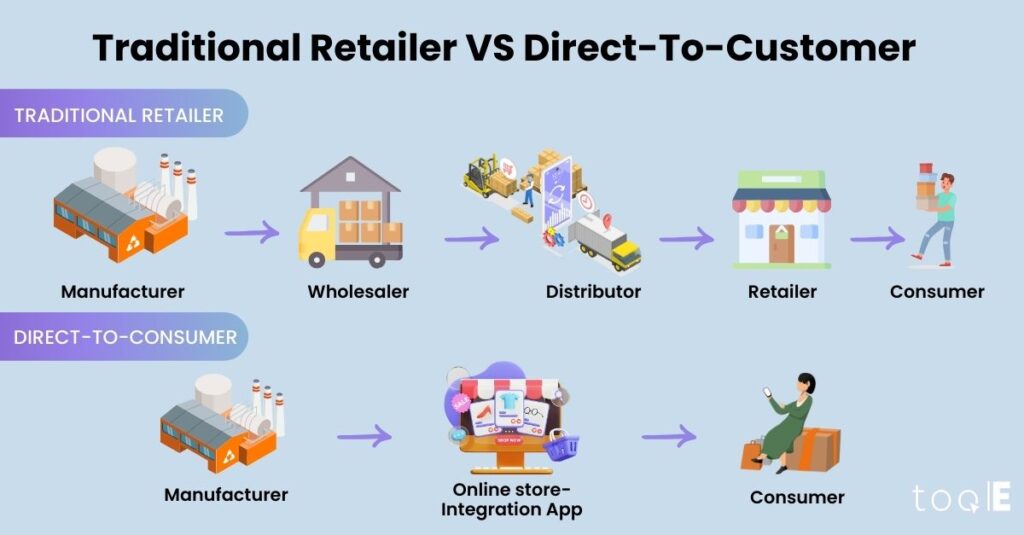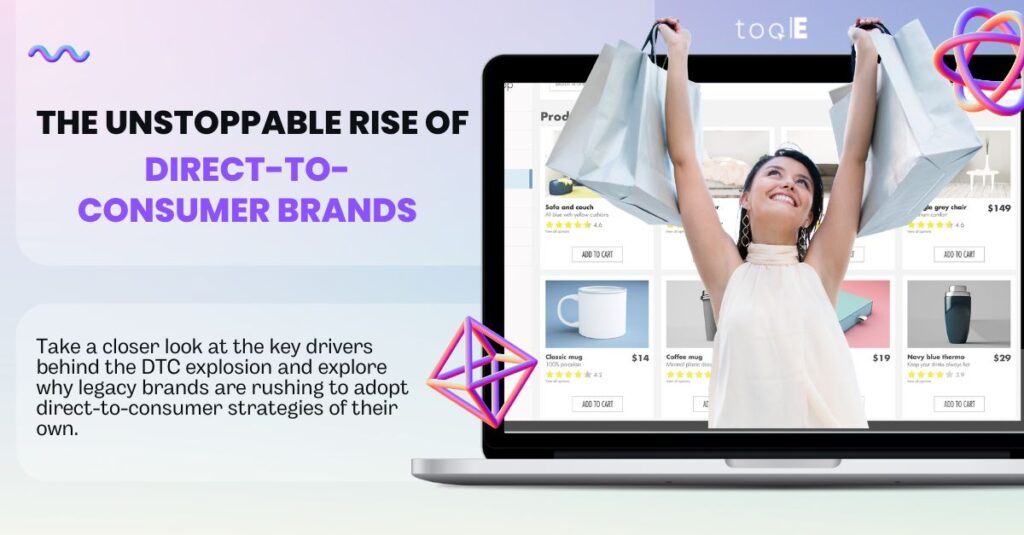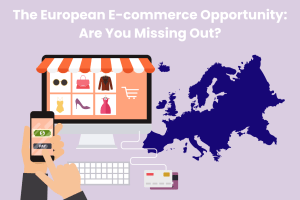The retail landscape is undergoing a seismic shift. In recent years, we’ve witnessed the explosive growth of a new breed of digitally-native, direct-to-consumer (DTC) brands that are rapidly disrupting traditional retail models. From apparel and beauty to home goods and consumer electronics, DTC players are grabbing market share and mindshare by the day.
This disruptive trend shows no signs of slowing down. In fact, the DTC model is poised to become the dominant force in the retail industry for the foreseeable future. Let’s take a closer look at the key drivers behind the DTC explosion and explore why legacy brands are rushing to adopt direct-to-consumer strategies of their own.
The Rise of the Digital-First Consumer

At the heart of the DTC revolution is the rapid evolution of consumer behavior and expectations. Shoppers today are increasingly digital-first, mobile-savvy, and demand highly personalized experiences. They have grown accustomed to the convenience, speed, and customization offered by e-commerce giants like Amazon. And they are less loyal to traditional retail brands, instead favoring nimble, digitally-native upstarts that can better cater to their needs.
This fundamental shift in consumer preferences has created a perfect storm for the DTC model to thrive. Unburdened by the constraints of physical retail locations and legacy supply chains, DTC brands are able to be more agile, innovative, and customer-centric.
Harnessing the Power of Data
At the core of the DTC advantage is data. DTC brands are able to collect rich, real-time data on their customers’ behaviors, preferences, and purchasing patterns. They then leverage advanced analytics to transform this data into actionable insights that inform every aspect of their business – from product development and marketing to customer service and logistics.
This data-driven approach allows DTC companies to hyper-personalize the shopping experience in ways that legacy retailers simply cannot match. DTC brands know their customers intimately, empowering them to deliver highly tailored product recommendations, dynamic pricing, and seamless omnichannel experiences. Software like Data-dash can help you achieve data driven results to increase sales and profitability.

The DTC Playbook: Social Media and Innovative Products
In addition to their data-driven prowess, DTC brands have also mastered the art of social media marketing and rapid product innovation. Unencumbered by the constraints of traditional advertising and wholesale channels, DTC players can cultivate authentic brand connections with consumers through platforms like Instagram, TikTok, and YouTube.
By partnering with influential content creators, leveraging user-generated content, and creating shareable, on-trend products, DTC brands are able to build passionate, loyal fan bases. This social media savvy allows them to cost-effectively acquire new customers and transform them into brand evangelists.
At the same time, the DTC model empowers companies to be more agile in their product development. Without the need to appease the demands of wholesale buyers or manage complex legacy supply chains, DTC brands can rapidly iterate on products based on real-time customer feedback. This agility enables them to stay ahead of evolving consumer trends and preferences.
The DTC Domino Effect: Legacy Brands Join the Fray
As the DTC juggernaut has continued to gain momentum, a growing number of traditional retail giants have taken notice. Recognizing the existential threat posed by digitally-native upstarts, legacy brands have begun to rapidly adopt direct-to-consumer strategies of their own.
The rationale is clear: by cutting out the middleman and going direct to the consumer, established brands can regain more control over the customer experience, enhance profit margins, and build deeper, more valuable relationships with their target audiences.
We’re already seeing this play out across industries. Iconic apparel brands like Nike and Levi’s have doubled down on their DTC channels, investing heavily in e-commerce, mobile apps, and loyalty programs. Consumer electronics giants like Sony and Samsung are also rolling out DTC initiatives to better compete with digital-first rivals.
Even venerable luxury labels are getting in on the action. Brands like Burberry, Prada, and Cartier are leveraging DTC strategies to foster more intimate connections with affluent consumers and gain more control over their brand positioning.
The New Retail Landscape: DTC Dominance Ahead
As consumer behaviors and expectations continue to evolve, the DTC model is poised to become the new standard in the retail industry. By 2025, eMarketer predicts that DTC e-commerce sales will reach $174 billion in the United States alone, accounting for nearly 20% of total e-commerce spending.
This seismic shift will have profound implications for how brands connect with and serve their customers. Those that can effectively harness data, social media, and innovative products will be best positioned to thrive. Legacy retailers that fail to adapt risk being left behind.
The DTC revolution is not just about a new business model – it’s about a fundamental transformation in the way brands and consumers interact. Power is shifting from the hands of traditional gatekeepers to the digitally-empowered end-user. Brands that can adapt to this new reality will prosper; those that cannot will fade into irrelevance.
The Next Frontier: DTC Beyond E-Commerce
As the DTC landscape matures, we’re also likely to see the model evolve beyond its current e-commerce-centric focus. Leading DTC brands are already exploring new frontiers, such as physical retail experiences that seamlessly blend digital and in-person touchpoints.
The rise of “DTC 2.0” will be driven by technologies like AR/VR, IoT, and 5G – empowering brands to create even more immersive, personalized shopping journeys. Expect to see DTC players experiment with innovative brick-and-mortar concepts, interactive product demos, and seamless omnichannel experiences that blur the lines between online and offline.
Ultimately, the DTC revolution is about much more than just a new go-to-market strategy. It represents a fundamental shift in the balance of power between brands and consumers. The winners in this new era will be those that can most effectively harness data, social media, and product innovation to build deep, lasting connections with their customers.
For legacy brands, the time to act is now. The DTC juggernaut shows no signs of slowing down – and the competitive landscape will only become more crowded and cutthroat in the years to come. Those that can rapidly adapt and reinvent themselves as digitally-driven, customer-centric enterprises will be best positioned to thrive. The rest will be left behind.





